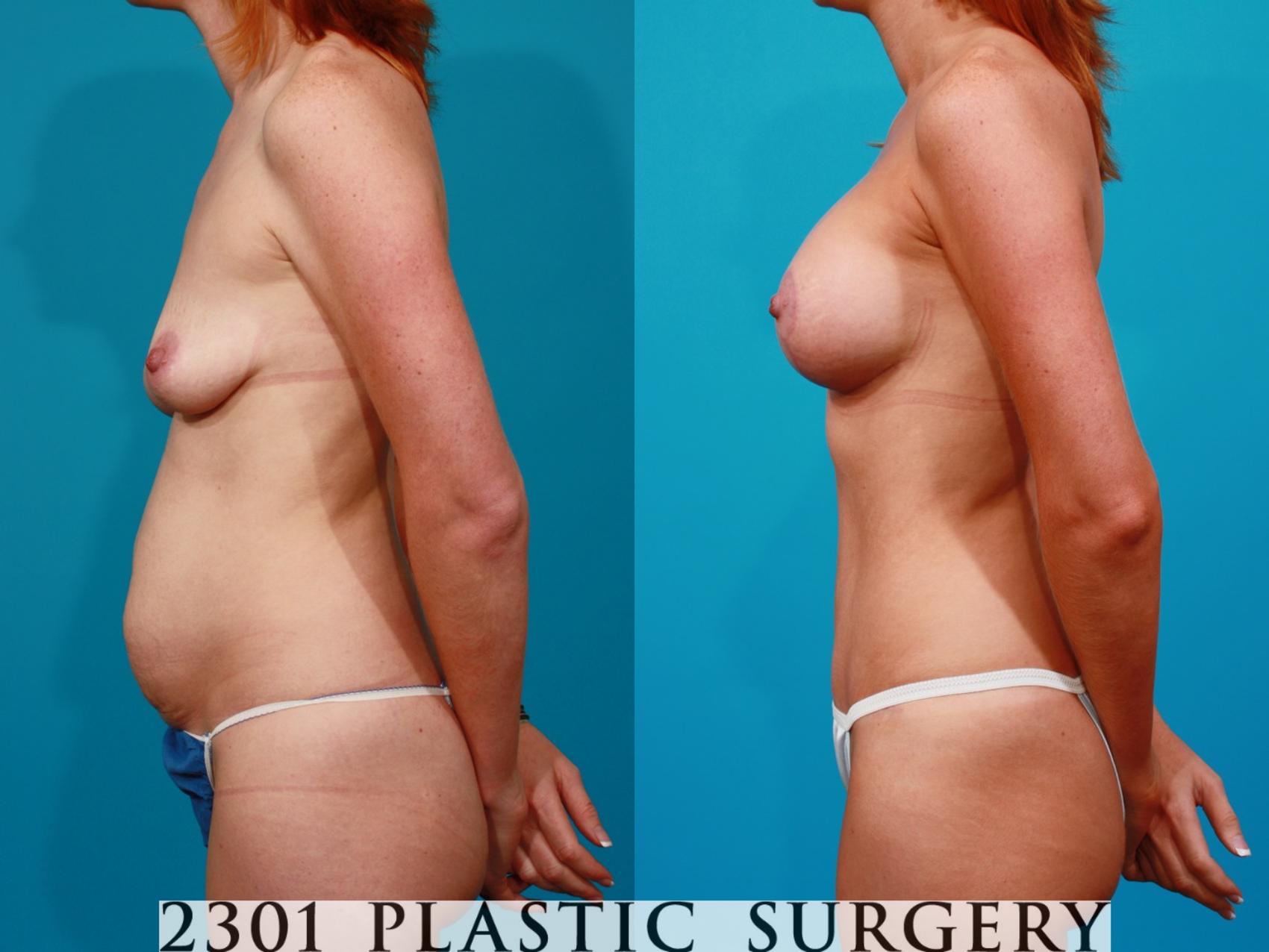If you’re frustrated by a lower belly bulge that won’t go away no matter how clean you eat or how much you exercise, a tummy tuck may be the solution you’re looking for. Our patients from Grapevine, Fort Worth, and beyond have turned to this surgery to regain the firm, toned midsection you’ve always wanted. Learn how to fix a belly pooch with tummy tuck surgery below.
What Causes a Belly Pooch?
There are many reasons people may notice changes in their belly area:
- Lifestyle factors such as poor diet, lack of exercise, or high stress.
- Pregnancy, which can stretch the skin and muscles.
- Weight fluctuations that leave behind stubborn fat or loose skin.
In many cases—especially after pregnancy—people may develop a bulge that doesn’t respond to cardio or healthy eating. That bulge is often caused by a condition known as diastasis recti (muscle separation in the abdomen).
What Is Diastasis Recti?
Diastasis recti happens when the right and left abdominal muscles separate, leaving a protruding bulge in the lower midsection. It’s common after pregnancy, as the growing baby puts pressure on the abdominal wall. However, it can also develop from yo-yo dieting or incorrect form during heavy lifting.
Are There Nonsurgical Ways To Fix Diastasis Recti?
Some people improve symptoms with physical therapy, yoga, or other gentle core-strengthening movements. However, ab-focused exercises such as crunches or planks usually make the condition worse.
For many, diet and exercise alone aren’t enough to restore your pre-baby contours. If the muscle bands don’t naturally return to place, surgery is the most reliable way to repair diastasis recti.
How Can a Tummy Tuck Fix Diastasis Recti?
Tummy tuck surgery addresses the problem of diastasis recti right at its source: the separated muscles. During the procedure, supportive stitches bring the abdominal wall back together. This recreates a strong, stable core and eliminates the protruding pooch.
In addition to muscle repair, tummy tuck surgery can:
- Remove loose, sagging skin
- Eliminate stubborn fat deposits
- Smooth and contour the waistline
Can a Tummy Tuck Fix an Apron Belly?
An apron belly (sometimes called a pannus) refers to excess skin and fat that hangs over the lower abdomen, often resembling an apron. It can develop after major weight loss, pregnancy, or as part of the natural aging process.
This condition doesn’t just affect your appearance—it can also cause discomfort, skin irritation, and challenges with clothing fit. A tummy tuck removes the hanging skin, reduces excess fat, and restores a more natural contour to the abdomen, so you can feel more comfortable and confident.
Does a Tummy Tuck Help With a C-Section Pooch?
Many people notice a bulge or “pooch” above their C-section scar, which is caused by stretched skin, scar tissue, and weakened abdominal muscles. This C-section pooch can be very difficult to improve with exercise alone.
A tummy tuck smooths the scar area, tightens loose skin, and repairs the underlying muscle separation. For mothers who want to restore their midsection after pregnancy and childbirth, this procedure can be a highly effective solution, especially when performed as part of a larger mommy makeover.
Beyond Flat Abs: Unexpected Benefits
While most people choose a tummy tuck to achieve a flatter, firmer stomach, many notice additional benefits after surgery, such as improved posture or reduced back pain. Many patients find that there are many emotional benefits, too, such as enhanced confidence in and out of clothes and the excitement that comes with expanded wardrobe options.
Take the Next Step
If you’ve ever struggled with a stubborn belly pooch, don’t worry—a tummy tuck may be right for you. Browse our before-and-after gallery to see real examples of our tummy tuck patients’ results. When you’re ready to start your body contouring journey, request a consultation or call us at (817) 442-1236 today.
This blog post was originally published in February 2021 and has been updated.








